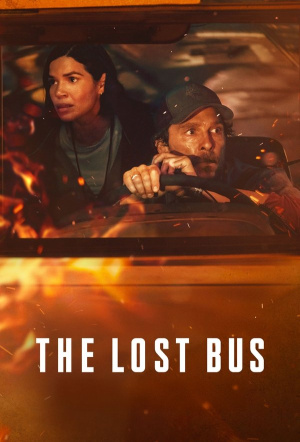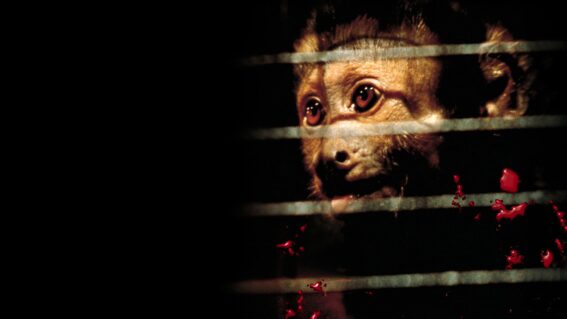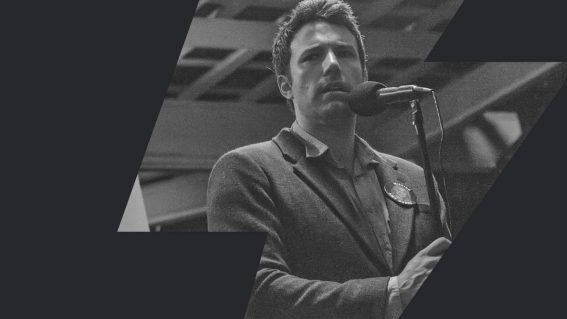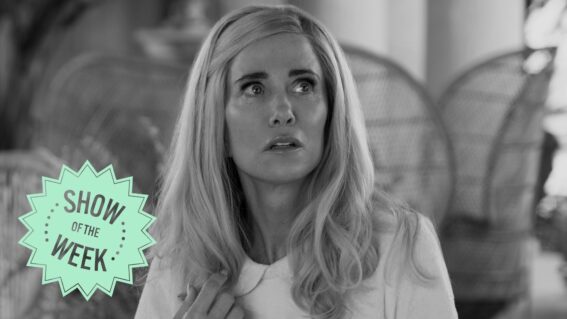The Lost Bus is a terrifyingly immersive disaster movie
Matthew McConaughey steers through an inferno in this pulse-pounding film, which showcases the intense, famously restless style of director Paul Greengrass.
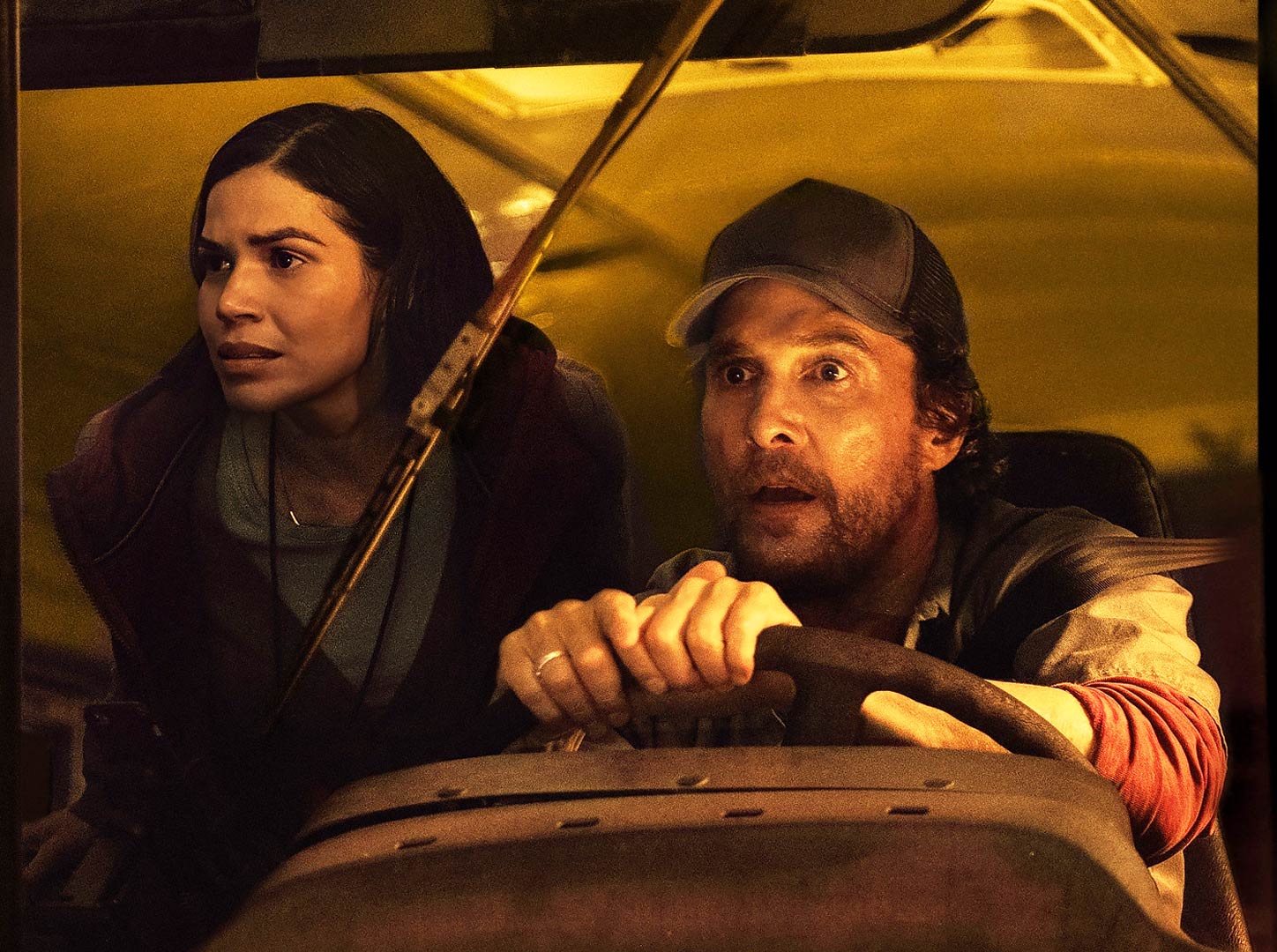
Are Paul Greengrass’ dreams edited in jump cuts? Do his memories play out in jittery handheld footage? The auteur’s famously restless style chases authenticity through urgent rhythms—fragments that unfold bam-bam-bam in the now-now-now, as if he views life as a series of contant calamitous instants. His films have an aura of controlled chaos: meticulous but scrambled, with a knack for making the air feel bruised, breathless, thick as smoke.
It’s no surprise, then, to discover that his style is well suited to a disaster movie about a school bus driver barrelling through hell-on-earth wildfire, loosely based on events that took place during California’s 2018 Camp Fire. The Lost Bus joins other Greengrass productions that explore terrible circumstances well beyond the control of those caught up in them—including Bloody Sunday (a massacre during a civil rights march), Captain Phillips (the hijacking of an American cargo ship), United 93 (the hijacking of a plane on September 11) and 22 July (the 2011 Norway attacks).
The stakes in his new movie are softened somewhat by the assumption, going in, that it’s probably not going to end with its protagonist and a bunch of kids dying horrible deaths. Which may be why the film’s early, character-establishing moments are so hard on Matthew McConaughey’s bus driver Kevin—because it wants to convince us that harm can, and has, come his way.
Greengrass and Brad Ingelsby’s script piles on the personal tragedies: Kevin’s mother is sick; his son says he wishes he were dead; his dog needs to be put down; he’s on struggle street financially. This is a classic example of pushing the protagonist down, down, down, into the direst of straits. Or so it seems: the gods will make it much harder when the real horror begins, creating a clear arc in which the only way is up.
The film’s opening shots drift over Paradise, California—which is pretty and green, almost idyllic—and are accompanied by a low, deep, groaning sound, as if the land were straining under pressure, signposting something ominous. After we meet Kevin, we know there’ll be a hero’s call to action, which arrives with an almost literal call: a dispatch goes out asking if any drivers can pick up a group of kids—accompanied by a teacher, Mary (America Ferrera)—who are stranded in an evacuation zone.
Naturally Kevin says “no,” heads home, and cracks open a beer. Of course he accepts the job and in no time is literally driving through fire, trying to find a way out. There’s lots of bedlam in this juiced-up movie; lots of smoke, fire, debris, carnage. It certainly didn’t need the gun-waving looters who attempt to hijack the vehicle, reacting to the disaster with a less-than-heroic response: “sweet, a free bus!”
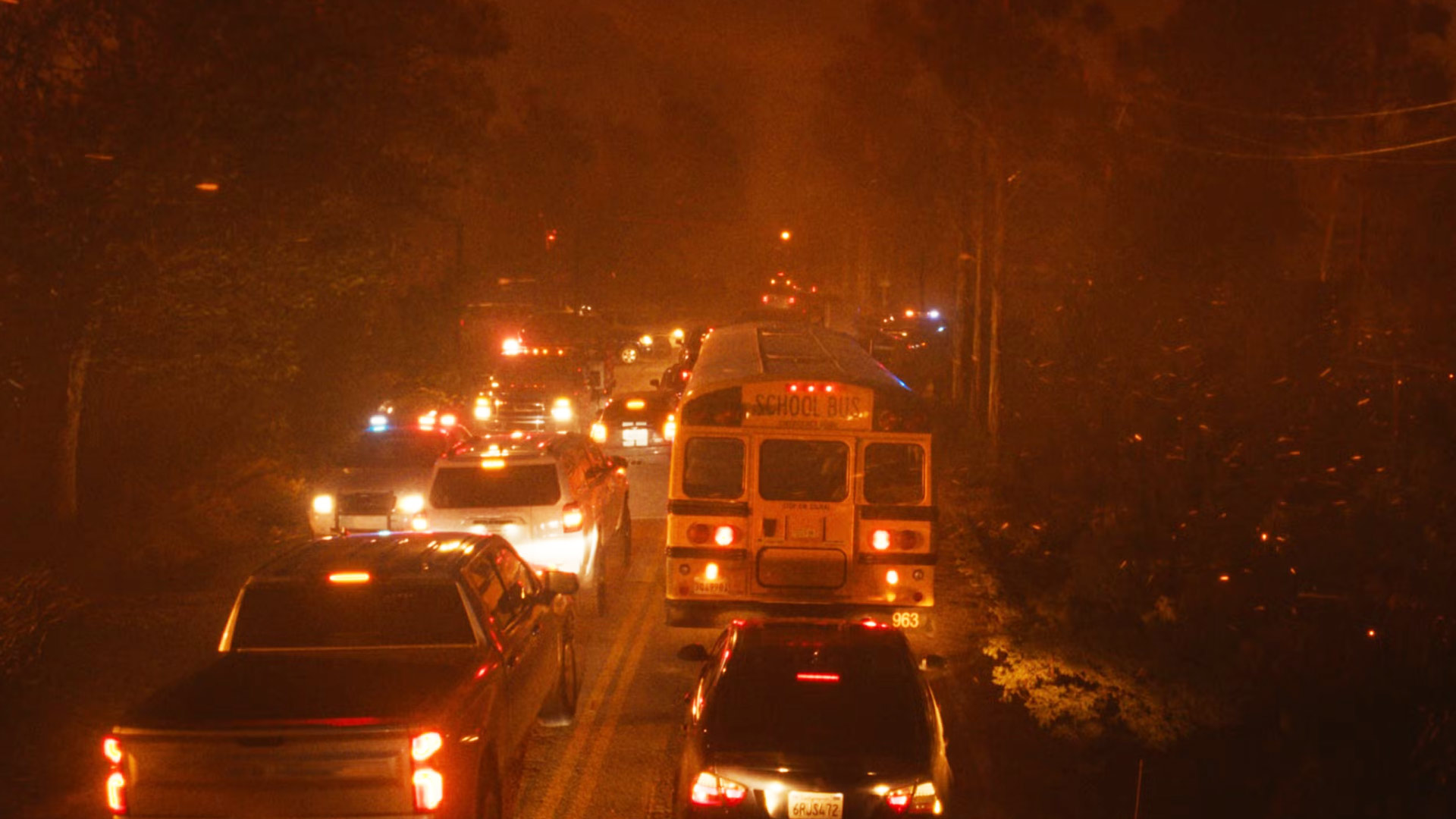
The Lost Bus‘ intense energy is partly created through spatial contrasts, the director switching between the tight insides of the bus and fire trucks and the open air around them, though this air of course has become the very source of the carnage—curtains of fire leaping around, blown by the devil’s breath. Some of the visuals reminded me of jaw-dropping footage from the 2019 Australian bushfires, captured from inside a fire truck whooshing through walls of red and orange: a sight so dramatic and terrible, so outside most of our lived experiences, it looks almost unreal.
Intensity is also sustained through non-visual means—for instance lines like “play by the book and everybody dies—you want that on your conscience?” Greengrass is great at making this kind of dialogue feel real, earned, a natural extension of terrible circumstances. He’s less adept at segueing into softer gears and arriving at catharsis, which is why he doesn’t quite nail the last act. The film also feels disproportionately balanced character-wise: so much important development established early on, and so little when the wheels are literally spinning and the fires raging.
This is however an unquestionably gripping and highly immersive experience, driven by Greengrass’s knack for capturing catastrophe and pulse-pounding immediacy.





